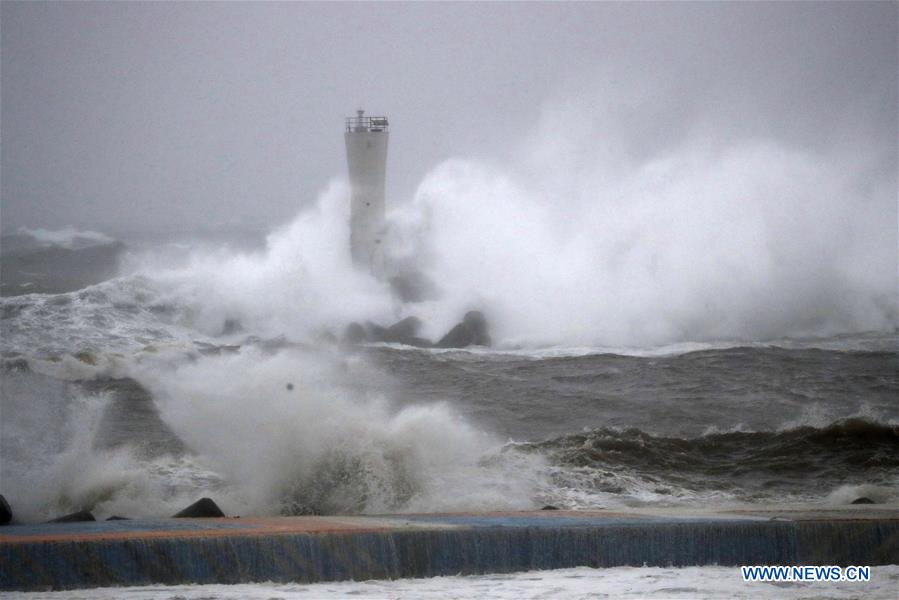TOKYO, Oct 13 (NNN-XINHUA) – Two people have died, three went missing and at least 70 injured, after Typhoon Hagibis made landfall on the Izu Peninsula on Japan’s main island at 7:00 p.m. local time (Saturday), bringing heavy downpours and winds, authorities said.
A man in his 50’s was found dead in an overturned car in Chiba Prefecture near Tokyo, possibly hit by a tornado, formed during the course of Typhoon Hagibis, which also ravaged several houses, local government officials said, while the police said, a man died after being hit by a landslide in Gunma prefecture.
The typhoon injured at least 70 people across the country and three people went missing, according to information provided by rescuers.
The country remained at its highest alert level as the Japan Meteorological Agency (JMA) issued an emergency warning in the afternoon, saying heavy rainfall “with a level of intensity observed only once every few decades” is predicted in Tokyo and the six surrounding prefectures of Gunma, Saitama, Kanagawa, Yamanashi, Nagano and Shizuoka.
The agency issued new warnings of severe rainfall for Ibaraki, Tochigi, Fukushima, Miyagi and Niigata prefectures, at 7:50 p.m. local time, while the warning for Shizuoka was lifted at 10:23 p.m. local time.
Typhoon Hagibis, meaning “swift” in the Philippine Tagalog language, could bring rainfall amounts not seen since a deadly typhoon in 1958, the JMA said.
The agency has downgraded Typhoon Hagibis’ intensity to “powerful” from “very powerful.” As of 8:00 p.m. local time, the typhoon had an atmospheric pressure of 960 hecto-pascals at its centre and was packing winds of up to 198 km per hour.
The water levels in several rivers, including the Tama and the Arakawa in the metropolitan area, have risen dangerously, due to the heavy rainfall brought by the typhoon, Japanese authorities said.
So far, at least five rivers, including those in Tokyo’s Hachioji and Ome have overflowed, local governments said.– NNN-XINHUA






